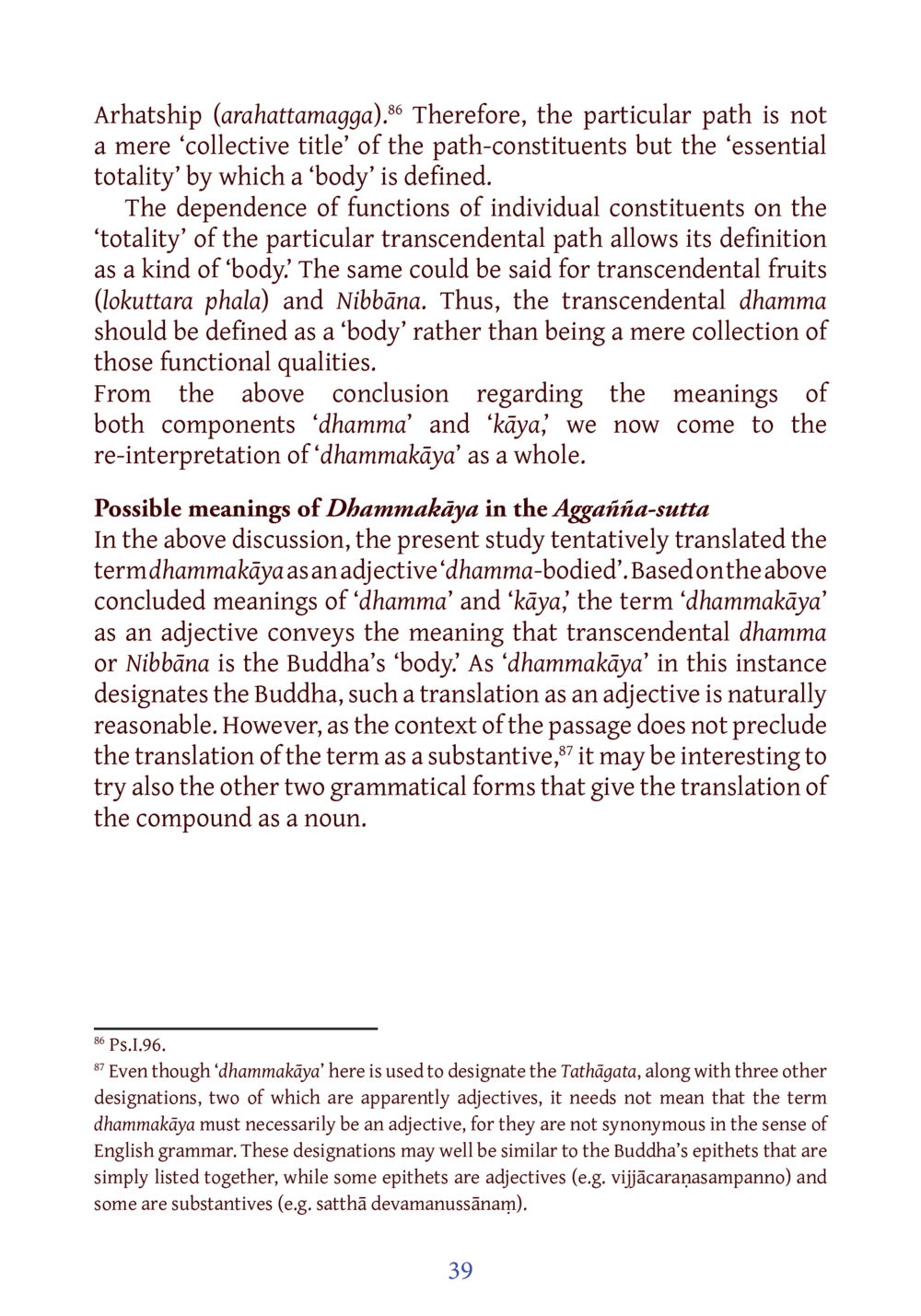Understanding Dhammakāya: The Essence of Transcendental Dhamma : หน้า 60/141
DIRI Journal : หน้า 60/141 Explore the concept of Dhammakāya and its definition in relation to Arhatship and Nibbāna, understanding it as the 'body' of transcendental dhamma.
1 ครั้ง

สรุปเนื้อหา
This text discusses the concept of Arhatship and the definition of Dhammakāya in the context of Buddhist philosophy. It argues that the path should be seen as an essential totality, forming a 'body,' rather than a mere collection of its constituents. The interpretation of 'dhammakāya' is explored, suggesting it embodies the transcendental dhamma and Nibbāna as the Buddha's 'body.' The analysis considers different grammatical forms of Dhammakāya and its implications in understanding the Buddha's designations, indicating that it can serve both as an adjective and a noun. For more insights, visit dmc.tv.
หัวข้อประเด็น
- Arhatship and its significance
- Definition of Dhammakāya
- Transcendental dhamma as a 'body'
- Interpretations of Dhammakāya in Buddhist texts
- The relationship between Nibbāna and Dhammakāya
ข้อความต้นฉบับในหน้า
หน้าหนังสือทั้งหมด













































































































































